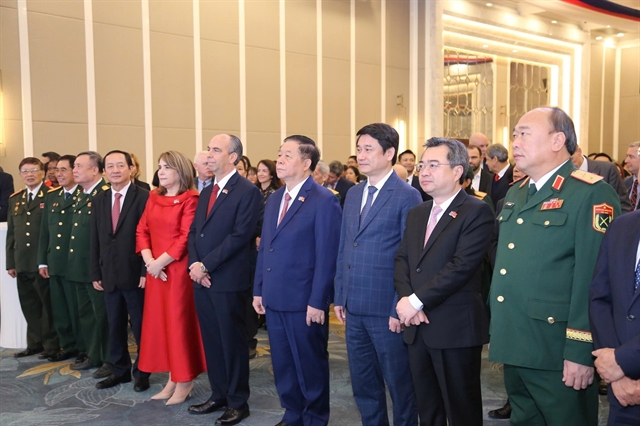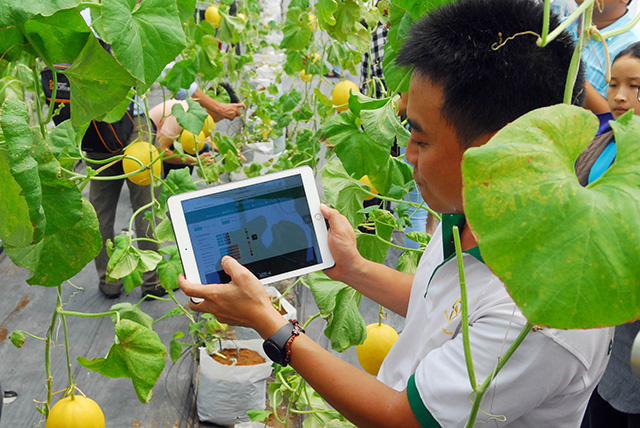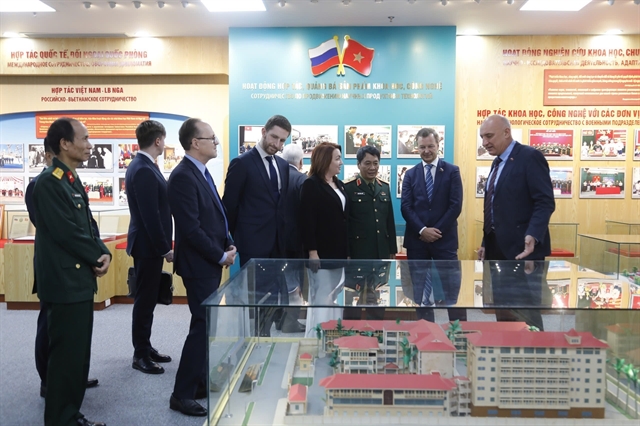 Politics & Law
Politics & Law
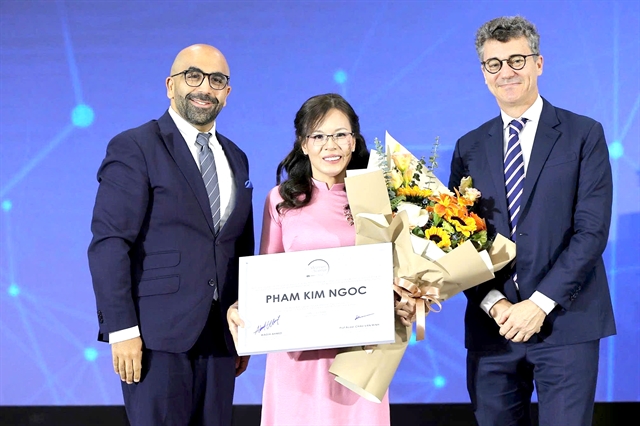
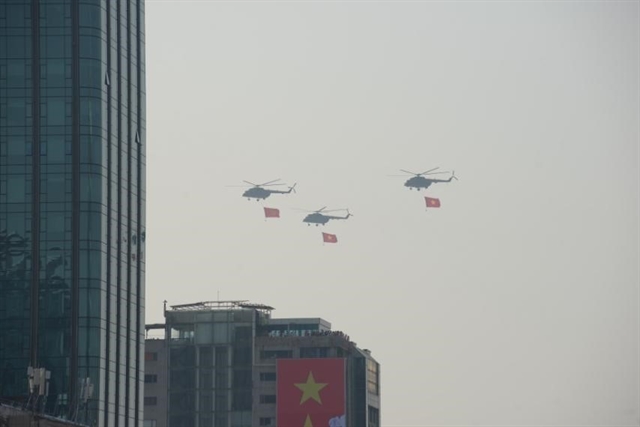 |
| Military helicopters carrying Party and national flags. — VNA/VNS Photo |
HCM CITY — A spectacular military parade and civilian procession took place along Lê Duẩn Boulevard in District 1, Hồ Chí Minh City, as part of the ceremony marking the 50th anniversary of the Liberation of the South and National Reunification (30 April 1975 – 30 April 2025), drawing the participation of over 13,000 people.
Following the State-level ceremonial proceedings, the military parade commenced with a fly-past by formations of Mi-8T, Mi-17, and Mi-171 helicopters bearing the Communist Party flag and the national flag, along with fighter jets of the Việt Nam People’s Army soaring above the skies of the southern metropolis.
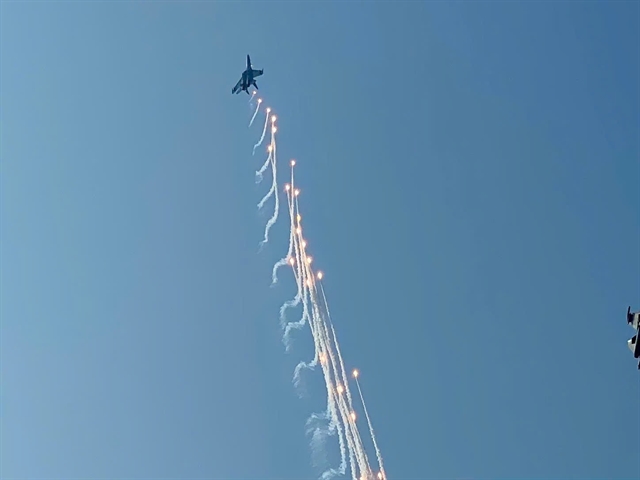 |
| Heat trap released from Su-30MK2 fighter jets. — VNA/VNS Photo |
The Su-30MK2 fighter jets and the versatile Yak-130 fighter-trainers executed complex aerial manoeuvres, highlighted by the Su-30MK2’s dazzling deployment of flares.
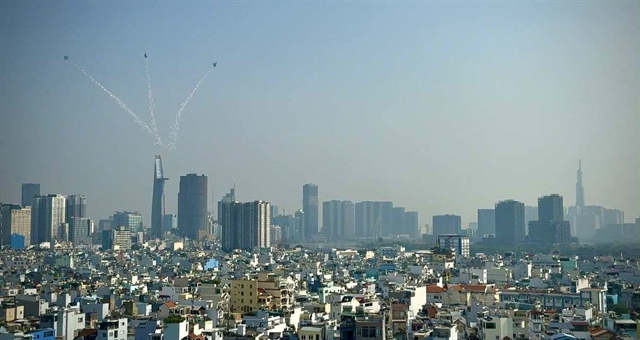 |
| Aerial manoeuvrers of military aircrafts over HCM City's skies. — VNS Photo Thu Ngân |
Next came the ceremonial escort vehicles: a model vehicle featuring the National Emblem of the Socialist Republic of Việt Nam, another bearing a portrait of President Hồ Chí Minh, and a vehicle symbolising the 50th anniversary of national reunification, all making their way to the grandstand.
The model of the National Emblem was mounted on a stylised image of the Lạc bird in mid-flight, symbolising the nation’s aspirations and will. Accompanying the vehicle were 54 outstanding students representing the strong and enduring great national unity of Việt Nam’s 54 ethnic groups—a heroic force forged over millennia of nation-building and defence, culminating in the legendary victory of Spring 1975.
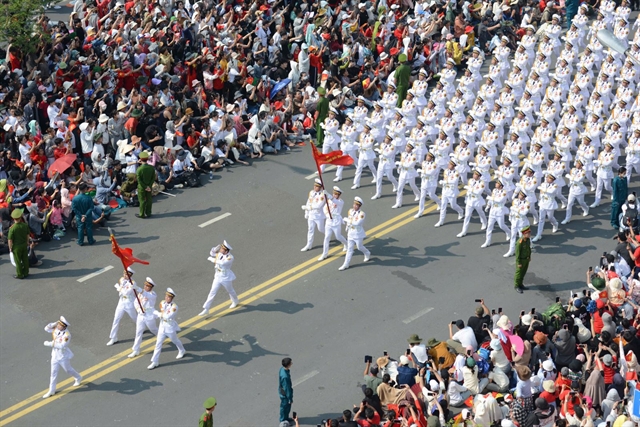 |
| The parade has 13,000 participants. — VNA/VNS Photo |
Marching behind were the Party and national flags, symbolising the victorious ideals and firm belief in the leadership, wisdom, and bravery of the Communist Party of Việt Nam, as well as the strength of national unity—drawn from history, igniting the present, and illuminating the future. This is the wellspring of power enabling the entire Party, people, and armed forces to build and firmly safeguard the Socialist Republic of Việt Nam.
The vehicle bearing President Hồ Chí Minh’s portrait followed, a tribute to the genius leader who founded, led, and trained the Communist Party of Việt Nam; a national liberation hero, world cultural figure, and beloved father of the people’s armed forces. President Hồ Chí Minh charted the revolutionary path to a series of historic victories, including the great Spring Victory of 1975 that reunified the country.
Accompanying the vehicle were 50 exemplary youth and children, representing the country’s future generations.
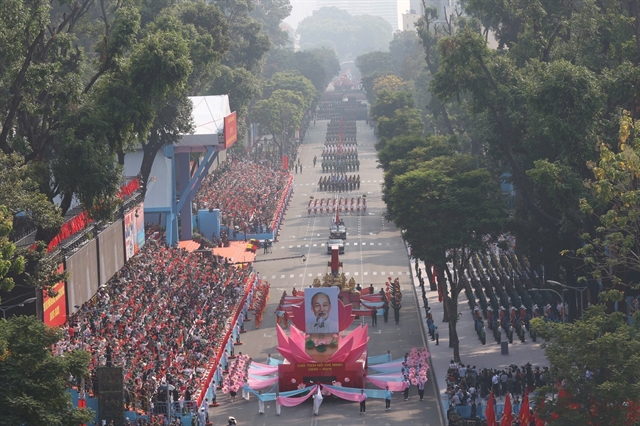 |
| A vehicle carrying the portrait of late President Hồ Chí Minh. — VNA/VNS Photo |
The military parade proceeded with formations representing various armed forces. These included a Command vehicle, the Military Flag Escort Unit, and female military bands. Officers representing the five military columns that advanced into Sài Gòn during the historic Hồ Chí Minh Campaign marched in formation, evoking the five-pronged lightning advance that led to the 30 April 1975 victory: Corps 1 (Quyết Thắng), Corps 2 (Hương Giang), Corps 3 (Tây Nguyên), Corps 4 (Cửu Long), and Division 232.
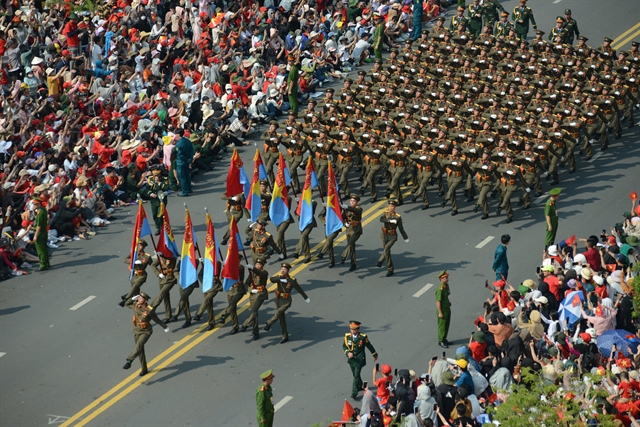 |
| Officers representing the five military columns that advance into the then Saigon (now Hồ Chí Minh City) in the spring of 1975 to secure the final victory. — VNA/VNS Photo |
The Liberation Army contingent, clad in iconic green uniforms and tropical pith helmets, bore the red-and-blue flag of the National Liberation Front, recalling the resilience of the southern armed forces during the anti-American resistance.
The Ground Forces Officer formation represented the Việt Nam People’s Army’s core force—committed to fulfilling all missions and building a revolutionary, regular, elite, and modern military to defend the Socialist Republic of Việt Nam.
The Navy Officer formation symbolised the core force safeguarding the nation’s maritime sovereignty and continental shelf. The Air Defence – Air Force Officers represented those protecting the skies and territorial integrity. Border Guard Officers, wearing green insignia, represented the frontline forces defending national borders and maintaining territorial sovereignty and security.
The Coast Guard Officers represented the specialised force tasked with law enforcement at sea, national security, and defending the country’s sacred maritime sovereignty. Logistics – Technical Officers ensured military equipment, logistics, and technical support. Female Signals Officers represented the army’s communications network. Female Military Medical Officers, identifiable by red cross emblems, showcased readiness to care for the health of soldiers and civilians alike, contributing to the army’s overall strength.
Electronic Warfare Troops represented a specialised force in modern warfare, tasked with information protection, jamming enemy communications, and safeguarding critical national targets. Cyber Warfare Troops formed the shield of national cybersecurity, ensuring the integrity of defence and military information systems.
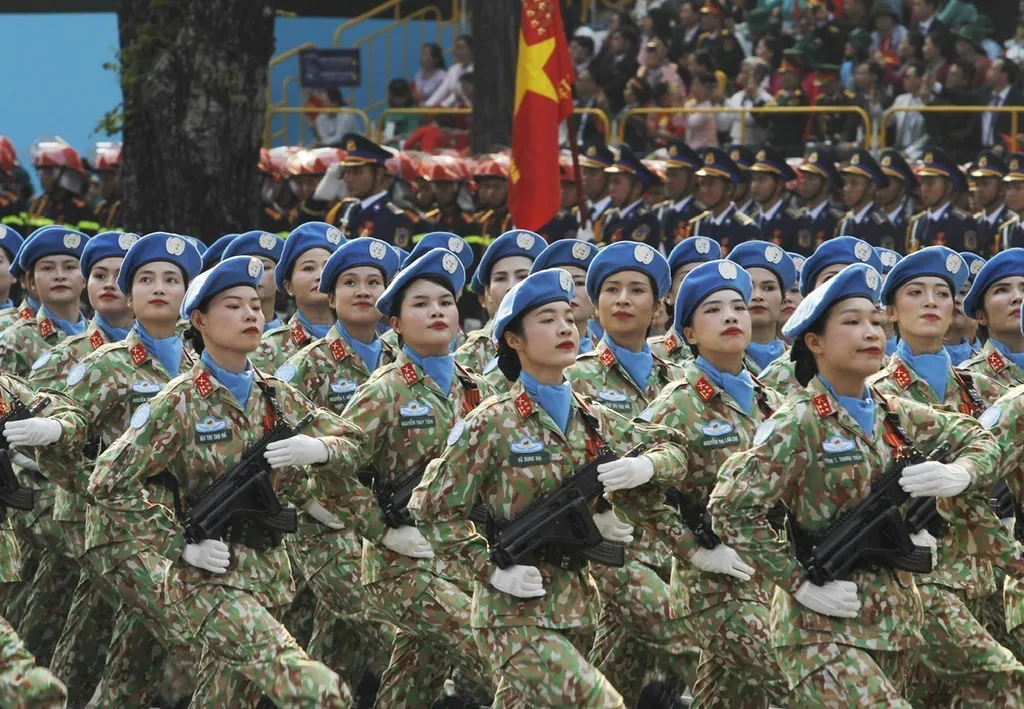 |
| Vietnamese female peacekeepers unit. — VNA/VNS Photo |
The Vietnamese Peacekeeping Women’s Contingent represented Việt Nam’s commitment to international peace, spreading the noble image of “Uncle Hồ’s soldiers” and promoting Việt Nam’s peaceful, beautiful image to the world. Infantry Troops embodied the frontline combat force. The Armoured Forces, a key strike force, were tasked with capturing strategic land targets. Special Forces represented the elite units trained for critical infiltration and assault missions.
Next was the Female Special Commando Unit, symbolising the courageous and silent contributions of the famed Sài Gòn Commandos during the resistance. They wore combat fatigues with integrated night-vision helmets, equipped with STV-215 submachine guns and bulletproof vests. Paratrooper Commandos, dressed in combat gear and armed with advanced weapons, represented the elite airborne assault units.
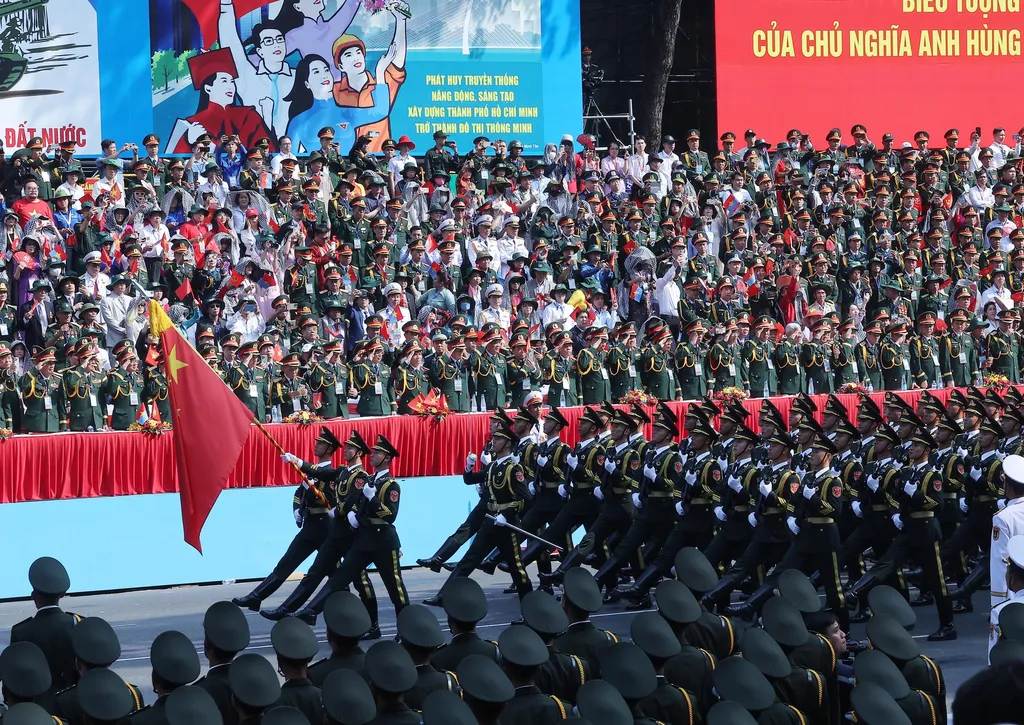 |
| Troops from the People's Liberation Army of China. — VNA/VNS Photo |
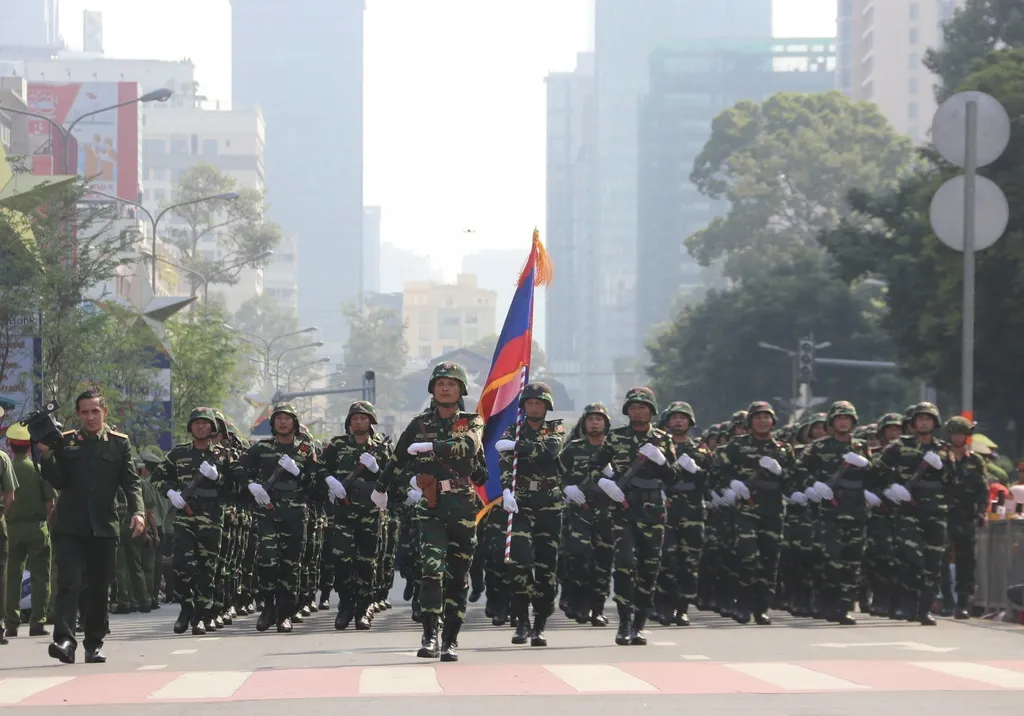 |
| Troops from the Royal Cambodian Army. — VNA/VNS Photo |
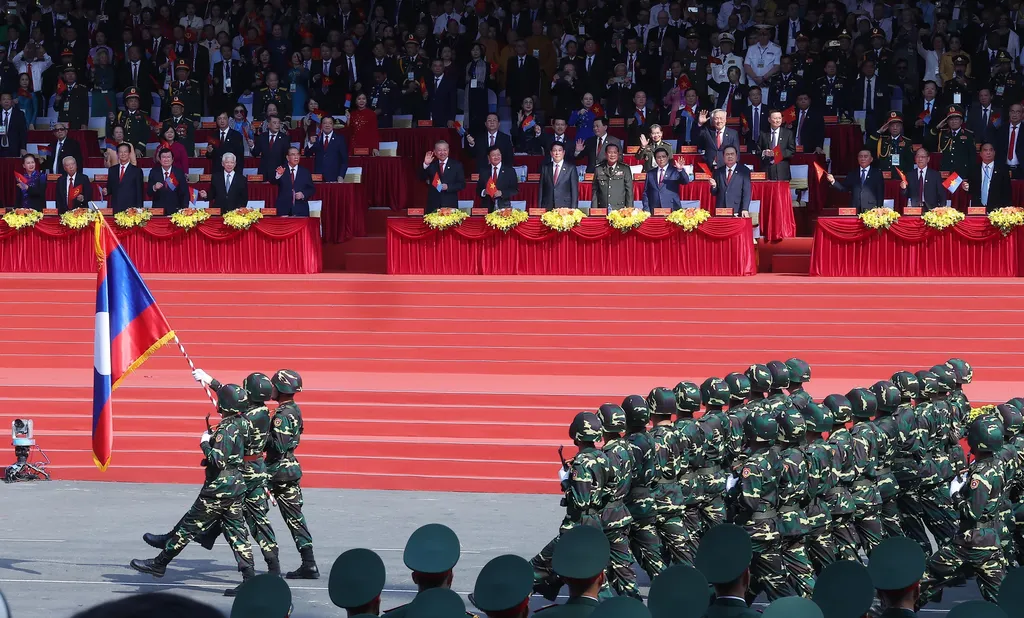 |
| Troops from Lao's army. — VNA/VNS Photo |
The parade included military contingents from China, Laos, and Cambodia—neighbouring nations with longstanding ties and historical solidarity in Việt Nam’s struggle for independence and national defence. Their participation highlighted Việt Nam’s defence diplomacy and sincere international solidarity, as well as deep appreciation for international support and friendship.
The Militia and Self-Defence Forces included male Maritime Militias representing coastal armed forces tasked with defending maritime sovereignty and assisting fishermen at sea. The Female Southern Guerrilla formation wore traditional black bà ba outfits, pith helmets, and checked scarves—recalling the resilient, patriotic southern women during wartime. The Female Northern Militia, with iconic headscarves, symbolised the northern women who “balanced the plough and the rifle,” played vital roles on the home front, and made key contributions to national reunification.
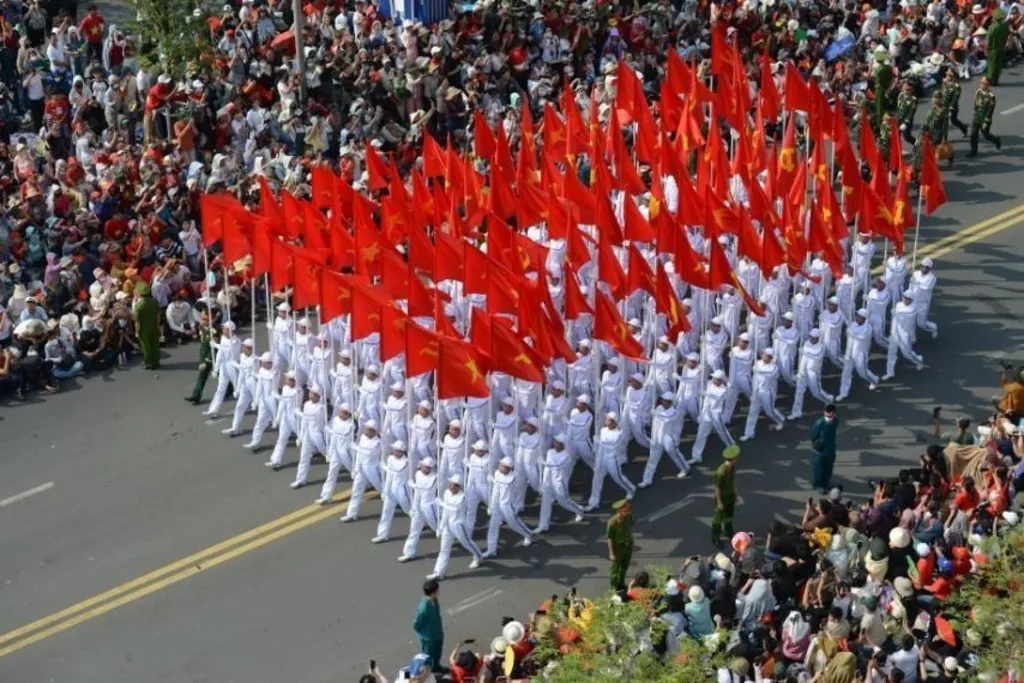 |
| The unit carrying the Party and national flags. — VNA/VNS Photo |
The parade of the People’s Public Security Forces, core defenders of national security and public order, began with the Command vehicle and the Flag Escort Unit.
Following were the male Security Officers representing the forces safeguarding national security and public order. The male Police Officers represented frontline law enforcement, tasked with crime prevention and ensuring social stability. Female Traffic Police Officers symbolised the grace, discipline, and resolve of women in ensuring traffic safety and protecting public welfare. The Air Police formation, tasked with aerial patrol, reconnaissance, search and rescue, and national defence missions, also took part. The Hồ Chí Minh City Police formation represented local forces securing the nation’s leading economic hub.
The Fire and Rescue Police wore navy-blue uniforms with reflective stripes and red helmets, symbolising their bravery in fighting fires and protecting lives and property.
The UN Peacekeeping Police formation wore standard public security uniforms with UN insignia, representing Việt Nam’s contribution to peacekeeping and humanitarian missions.
The male Mobile Police formed the rapid-response unit for complex security threats and vital national events. The Female Special Task Force followed—an elite, well-trained unit ready for anti-terrorism, hostage rescue, and other critical missions. The Reserve Mobile Police were trained and combat-ready to deal with emergent threats.
The final formations included local grassroots security units supporting public order and the Mounted Cavalry Police. Bringing the event to a close was the Red Flag Formation, embodying the pride, honour, and dignity of the Vietnamese people. Beneath the glorious banner, the entire Party, people, and armed forces united in past struggles and continue to strive for future victories in building and defending the homeland.
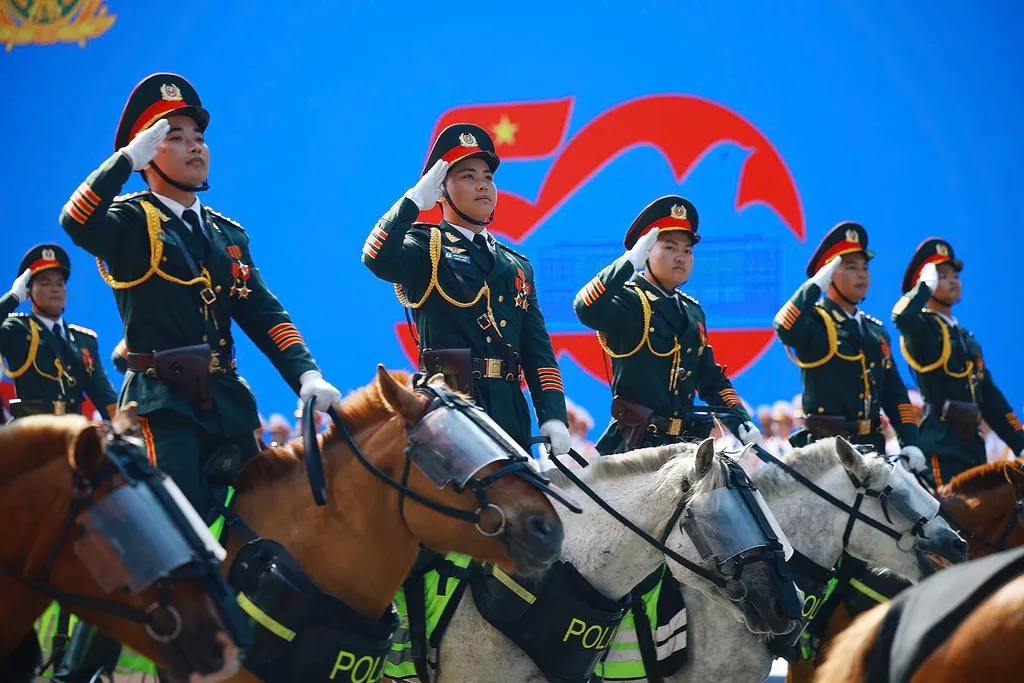 |
| Mounted police unit. — VNA/VNS Photo |
Civic parade units followed, including Heroes of the People’s Armed Forces and Labour Heroes; Việt Nam Fatherland Front; Veterans; Former Youth Volunteers; Workers; Farmers Intellectuals; Entrepreneurs; Overseas Vietnamese; Women’s Union; Children and Youth; and Culture – Sports – Media sectors.
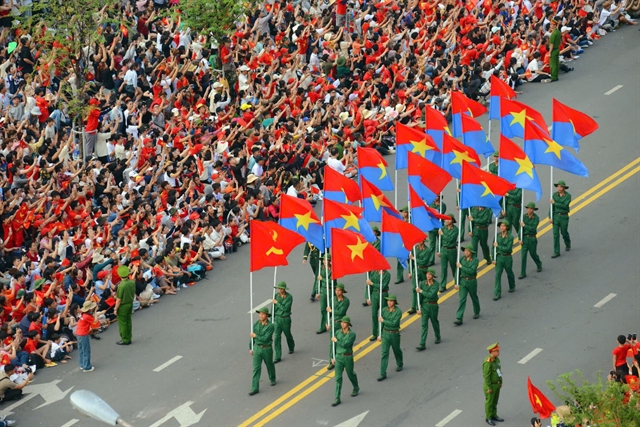 |
| The Liberation Army contingent. — VNA/VNS Photo |
Among the formations, the Honour Formation of Heroes of the People’s Armed Forces, Labour Heroes, and Outstanding Historical Witnesses received a particularly warm welcome from all delegates on the grandstand.
This was the only formation permitted to remain seated while passing the grandstand. It comprised 350 delegates seated aboard seven double-decker buses designed in red and blue hues, evoking the flag of the National Front for the Liberation of South Việt Nam on the day of complete victory.
The names of provinces and centrally-run cities from across the country were emblazoned on the sides of the buses. The participation of this Honour Formation showcases the current generation's respect for historical memory, gratitude to heroic martyrs, and the transmission and inspiration of patriotism, a desire for peace, and national spirit across generations.
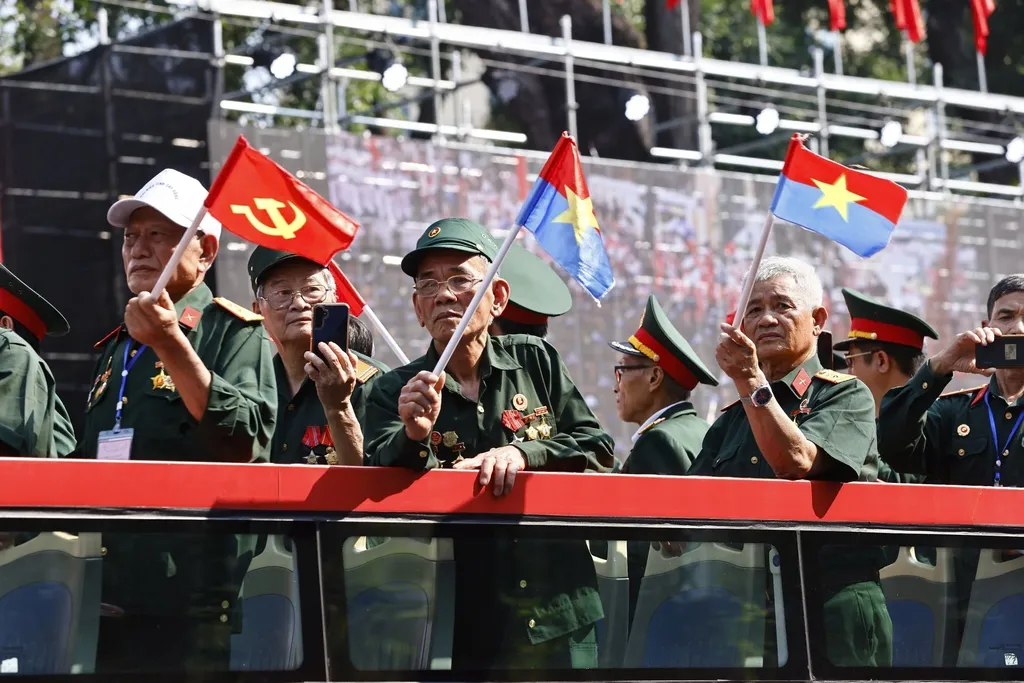 |
| Heroes of the People’s Armed Forces, Labour Heroes, and Outstanding Historical Witnesses. — VNA/VNS Photo |
The final formation in the parade was the Culture – Sports – Media one, consisting of 450 participants, including numerous renowned artists, beauty queens, models, and outstanding athletes.
Bringing the ceremony commemorating the National Reunification to a close was a symbolic display of the release of balloons and doves, emblems of peace, faith, and hope for the future. — VNS


.jpg)
